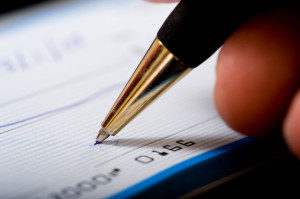Stephen Spielberg’s 2002 film, Catch Me if You Can, depicts the true story of Frank Abagnale, Jr. The movie, which stars Leonardo Dicaprio and Tom Hanks, opens with a depiction of Abagnale’s 1977 appearance on the popular game show, To Tell the Truth. The premise of the show is to have the contestants guess which of three individuals is actually telling the truth. In the 1977 episode featuring Abagnale, the contestants seem miffed at the myriad of truths revealed by the show’s host.
 For much of his adolescent and early-adult years, Abagnale impersonated a doctor, a lawyer, and even a commercial jet pilot. During a six-year span, he passed more than $2.5 million in bad checks. It’s a story that—to the show’s contestants—seemed almost unbelievable.
For much of his adolescent and early-adult years, Abagnale impersonated a doctor, a lawyer, and even a commercial jet pilot. During a six-year span, he passed more than $2.5 million in bad checks. It’s a story that—to the show’s contestants—seemed almost unbelievable.
In today’s world, it’s hard for many businesses to believe they could ever fall victim to check fraud. And these days, with more payments being made electronically, less check fraud does occur. Yet, according to a 2013 AFP Payments Fraud and Control Survey, “checks continue to lead as the payment type most attacked.” This same report also revealed that—of the businesses experiencing losses due to check fraud—the average loss was $20,300.
So, what can you do to protect your account(s) from the possibility of check fraud?
You can be positive that Positive Pay is the way to go
You might wonder what ever happened to Frank Abagnale, Jr. Well, after his arrest and subsequent parole, he went on to become a security consultant for both private industry and the government. He’s also partly responsible for Positive Pay, an anti-check fraud service offered to commercial accountholders by most financial institutions.
How does it work?
When issuing checks, most accounting software programs provide an option for the user to generate a CSV file containing some standard information for each issued check—account number, check number, issue date, payee name and amount. This CSV file (example file template here) is then uploaded to the bank via online banking, and the bank stores this information in its internal system.
As the company’s checks are presented for processing, the bank cross-references the information on the check against the information submitted by the company. If there is a discrepancy, the bank designates the item as an “exception” and flags it for the company’s review. This allows the company to review and verify the check before it clears the account, where they can then decide if the item should be paid or if it should instead be returned to the bank where the item was first presented.
It’s a relatively simple process that—once established—requires very little time and has the potential to prevent big losses.
How much does Positive Pay cost?
Many banks do charge for Positive Pay; however, at Central National Bank, we look at Positive Pay as a win-win. When a company begins using Positive Pay, not only does it reduce the company’s exposure to the possibility of check fraud, but it also reduces the risk to the bank. Therefore, Central National Bank does not charge anything for use of the service.
How can I sign up my business?
Positive Pay is usually housed in a bank’s Treasury Management, Cash Management, or Business Electronic Services department. Central National Bank customers can sign up by emailing the CNB Treasury Management Department.


